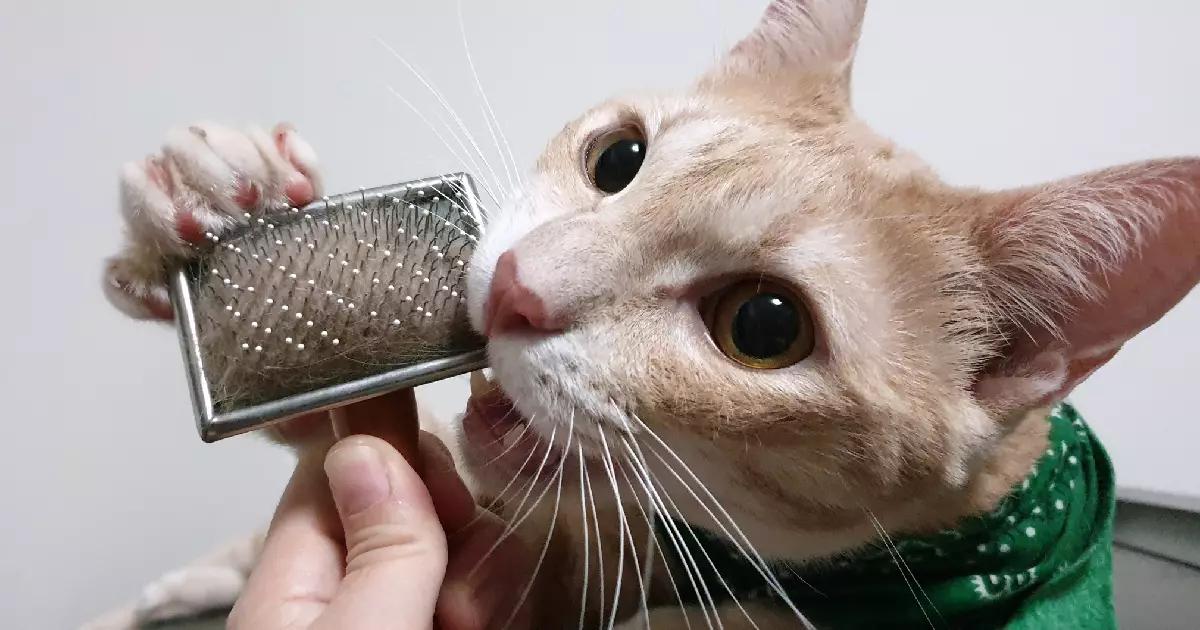Felines have an innate tendency to groom themselves meticulously, as any cat owner can attest. They adopt a near-obsessive routine of licking their fur to maintain cleanliness and comfort. This routine, while essential for keeping their coats sleek, often results in the unintentional ingestion of fur. If you’ve ever stumbled upon a hairball that appears more like a rodent than a pet’s byproduct, then you understand the sometimes comical yet concerning consequences of this behavior.
This grooming behavior is essential for maintaining their health and hygiene, yet it can lead to peculiar habits, one of which is consuming hair. You might observe your cat rummaging through tufts of fur gathered around the house or even scavenging for strands that might have floated to the floor. Let’s unravel the motivations behind these seemingly odd actions.
Pica: The Uncommon Yet Surreal Compulsion
It’s essential to differentiate between normal grooming behaviors and an uncommon syndrome known as pica. This medical condition, often under-discussed, involves a persistent compulsion to consume non-food substances. It’s an atypical scenario but important to be mindful of if your feline friend is showing a strong inclination to snack on odd materials like hair, plastic, or even dirt.
Cats may munch on their own fur or other strange materials for various reasons, including nutritional deficiencies. If a cat’s diet lacks essential nutrients, they may turn to unusual alternatives to fill those gaps. This behavior could also signal underlying health problems, necessitating a visit to the vet for a comprehensive examination and dietary review.
The Role of Boredom and Environment
In some cases, the act of eating fur may be primarily linked to boredom. Cats are insatiably curious creatures, and lack of stimulation can lead to odd behaviors. If they aren’t sufficiently engaged with toys or environments that challenge their intellect and instinct, they may turn to peculiar activities such as chewing on fur or exploring other inedible objects.
As a responsible pet parent, ensuring that your cat has ample opportunities for play, exploration, and social interaction is crucial. It’s vital to create an enriching environment where your furry friend can thrive both mentally and physically. Interactive toys, climbing structures, or engaging playtime can significantly prevent boredom-induced behaviors.
Understanding Anxiety and Emotional Factors
Like humans, feline companions can also experience stress and anxiety. Changes in the household—such as moving to a new home, the arrival of new pets, or shifts in daily routine—can trigger anxiety in our cats. In response, they might resort to excessive grooming or consuming hair. Observing these behaviors could indicate that your cat is feeling overwhelmed or insecure.
It’s crucial to keep an eye out for other signs of stress and provide comfort to your pet during such transitions. Whether through soothing voices, familiar scents, or comforting spaces, providing emotional stability can help alleviate stress. Should your feline’s anxiety persist or worsen, consulting with a veterinarian or animal behaviorist may yield effective strategies tailored to your unique situation.
The Bottom Line: Observing, Understanding, and Caring
So, what should you take away from your cat’s peculiar habit of devouring fur? A few strands of hair here and there might not be cause for alarm; however, vigilance is vital. If you find that your cat’s behavior escalates to frequent fur consumption or is accompanied by other unusual traits, seeking veterinary advice is prudent.
Beyond the simple act of eating hair, these behaviors serve as a reminder of the complexity of our feline companions. They are creatures driven by instinct—grooming not just for cleanliness but as a survival tactic. We, as their human caretakers, have the responsibility of understanding these subtle clues and responding accordingly.
As for those quirky habits, be they amusing or concerning, they are an integral part of the rich tapestry of feline life. Each behavior presents a unique window into the personality and needs of your cat. Cultivating a deeper understanding of them helps your feline friend lead a happier, healthier life. So, remain observant, adapt to their needs, and continue spoiling them with love and treats—this is the essence of being a cat parent.

